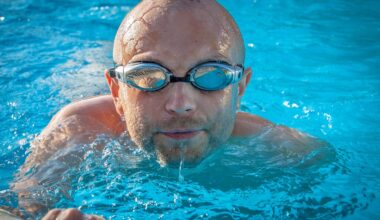Common Mistakes in Corrective Exercise and How to Avoid Them
Corrective exercise is designed to help individuals overcome specific movement deficiencies, yet many practitioners still fall into common pitfalls. One of the most frequently made mistakes is the lack of proper assessment before diving into corrective exercise routines. Evaluating a client’s posture, movement patterns, and physical limitations is crucial. Without a comprehensive assessment, the provided corrective exercises may not address the actual issues effectively. Some engage in assumptions regarding a client’s needs, which can lead to ineffective or even harmful routines. Additionally, neglecting the importance of proper progression is another vital error. Starting too aggressively with corrective exercises may result in injuries or exacerbate existing conditions. It is essential to gradually increase the intensity and complexity of exercises based on the client’s individual capabilities. Ensure that the progression is tailored to each person to avoid overwhelming them. Education is crucial; practitioners should continually update their knowledge about corrective exercises. Remember that each individual’s body mechanics are different, which necessitates customized approaches. Building a strong foundation through ongoing education and assessment for every client is vital for successful corrective exercise outcomes.
Ignoring Client Feedback
A frequent error in corrective exercise programs is ignoring client feedback during sessions. Clients often experience discomfort or pain while performing specific exercises; thus, using their feedback to adjust their routines is essential. When practitioners overlook this feedback, they risk causing further injury or failing to achieve the desired outcomes. Individuals may also not feel confident to express their concerns, leading practitioners to proceed with outdated methods. Encourage open communication so clients feel comfortable sharing their experiences, which aids in creating a tailored program. Moreover, incorporating regular check-ins can provide insights into how the client is responding to the program, allowing for adjustments as necessary. Additionally, understanding the psychological aspect of corrective exercise is equally important. If a client is anxious or skeptical about a particular exercise, it can hinder their performance and commitment. Practitioners should aim to educate clients on the importance and intended benefits of each exercise, fostering a positive mindset towards their progress. Establishing a trusting relationship can positively influence client adherence and loyalty to their corrective exercise regimen, ultimately leading to sustainable results.
Another major mistake is the lack of variability in the corrective exercise routine. Repeatedly adhering to the same set of exercises can lead to boredom and decreased motivation among clients. When individuals are faced with a monotonous routine, they may lose interest, causing them to skip sessions or give up entirely. To prevent this, practitioners should introduce a variety of exercises that target similar issues but in different ways. Techniques such as modifying angles, changing equipment, or altering the pace can enhance engagement and effectiveness. Additionally, incorporating functional movement patterns that mirror the client’s daily activities can significantly improve adherence by connecting exercises to real-life benefits. Keeping the routine fresh and exciting will motivate clients toward their goals. Furthermore, tracking progress should involve documenting all changes in the program to maintain accountability and measure outcomes. Celebrating small victories can have a significant impact on client motivation. The use of technology, such as apps or wearable devices, can help monitor improvements in strength, flexibility, or endurance. Practitioners must ensure that exercise modifications are linked to the client’s specific corrective focus and suitability.
Insufficient Focus on Core Stability
Focusing on core stability is often overlooked in corrective exercise strategies. A strong core is essential for overall functionality and injury prevention. Many practitioners mistakenly prioritize isolated muscle strengthening, neglecting to integrate core stabilization into their routines. Strong stabilizing muscles in the core play a vital role in maintaining body alignment during movement, which directly affects performance and posture. Core stability should be integrated with all corrective exercises, ensuring that the primary focus does not divert away from fundamental stability. To emphasize core stability, exercises like planks or bird-dogs can be included. Furthermore, educating clients about the significance of core strength encourages them to engage more actively in their routines. Practitioners should teach proper activation techniques that require minimal movement but enable effective core engagement. Failure to address this aspect can result in compensatory patterns taking over, leading to further pain or dysfunction. It’s important to build routines progressively, targeting specific core domination before incorporating dynamic movements. Corrective exercises should strive to deliver long-term structural improvements through specialized core stability enhancements.
Another mistake made in corrective exercise is the neglect of flexibility training. Many practitioners focus primarily on strength and functionality, inadvertently dismissing the importance of improving flexibility. Tight muscles can significantly hinder movement patterns and lead to issues over time. Incorporating stretching routines before and after corrective exercises can improve overall range of motion and facilitate better movement mechanics. Flexibility training should be approached systematically, including static, dynamic, and neuromuscular techniques. Furthermore, encouraging clients to perform specific stretches that target tight muscles related to their corrective focus can yield positive results. It’s crucial to educate clients about the benefits of flexibility, emphasizing how it aids overall fitness and reduces the risk of injury. In many cases, encouraging consistent flexibility training will enhance corrective exercise outcomes tremendously. Including warm-ups that involve flexibility work can improve muscle elasticity, preparing clients for the upcoming exercises. Furthermore, practitioners should remember to listen to the body’s cues to avoid overstretching, which can lead to injury. Incorporating sufficient recovery and mobility days into the program is equally essential in preventing burnout and maintaining progress toward individual fitness goals.
Overcomplicating the Program
Another common pitfall in corrective exercise is overcomplicating programs with unnecessary complexity. It’s easy for practitioners to be tempted to introduce advanced movements or multifaceted routines with the belief that they provide better results. However, this may overwhelm clients and dissuade them from performing exercises correctly. Simplicity in corrective exercise is essential to facilitate understanding and adherence. Practitioners should aim to create clear and concise routines focusing on essential movements targeting the individual’s deficiencies. Each exercise should have a specific purpose, contributing to overall goals and enhancing effectiveness. One way to streamline the program is by focusing on foundational movements, ensuring clients can master these before progressing to more complicated variations. Reinforcing the importance of form over advanced techniques will cultivate better habits. Beyond this, any additional techniques should only be introduced once clients have demonstrated proficiency in basic movements. Practitioners must regularly communicate the importance and reasoning behind each exercise to maintain motivation. Keeping the corrective exercise program straightforward ultimately leads to better adherence while ensuring optimal benefits.
Lastly, failing to create a realistic timeline for progress can dishearten clients and derail their journey. Achieving corrective exercise goals often takes time, and some individuals may expect instant results. When comfortable expectations are not met, clients may become frustrated or demotivated. Practitioners should encourage patience and reframe their outlook on progress as an ongoing journey rather than a destination. Engaging clients in creating achievable milestones can drastically improve their experience and satisfaction. Establishing short-term, medium-term, and long-term goals can guide progress, helping to visualize the journey ahead. Providing gradual markers allows clients to celebrate wins while maintaining focus on the ultimate aim. Consistent communication, check-ins, and empowering clients to advocate for their trajectory are essential to fostering a positive experience. Practitioners should also leverage technology tools like progress tracking apps or specific metrics relevant to the client’s corrective journey. This helps maintain their enthusiasm while addressing progress adequately. Fostering a supportive atmosphere where clients feel validated keeps their motivation alive, enabling meaningful advancements in their corrective exercise journey.
Conclusion
In summary, avoiding common mistakes in corrective exercise can lead to more effective outcomes for clients. Practitioners should address the assessment stage, welcoming client feedback, incorporating variability, emphasizing core stability and flexibility, and maintaining simplicity. Additionally, creating realistic timelines enhances motivation and encourages adherence. Each aspect is essential for driving successful corrective exercise routines, ensuring that clients experience lasting results. By fostering education on individual needs and the importance of their unique goals, practitioners can optimize the corrective exercise process. Ultimately, avoiding these errors will enhance both the practitioner’s and the client’s relationship, leading to an empowered, healthy lifestyle through functional fitness.


